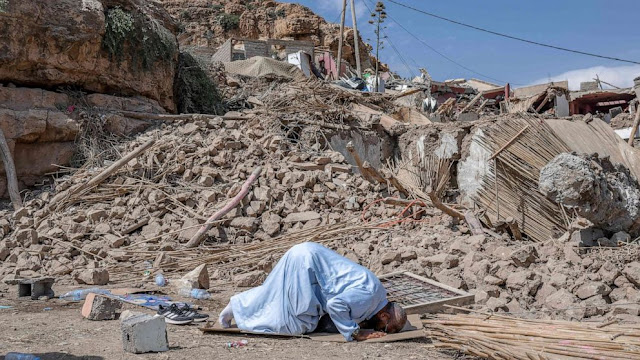 |
| Earthquake rocked Morocco |
Morocco
is located in a seismically active region known as the Mediterranean-Atlantic
seismic belt. The history of earthquakes in Morocco dates back centuries, and
the region has experienced numerous significant seismic events. Here are some
key historical earthquakes in Morocco:
1755
Lisbon Earthquake: Although the epicenter was in Portugal, this earthquake had
a profound impact on Morocco. It caused significant damage and casualties in
cities along the Moroccan coast, including Tangier and Larache.
1960
Agadir Earthquake: One of the deadliest earthquakes in Moroccan history, this
quake struck the coastal city of Agadir on February 29, 1960. The magnitude was
estimated to be around 5.7 to 6.1 on the Richter scale, and it resulted in the
death of approximately 12,000 people and the near-total destruction of Agadir.
2004 Al
Hoceima Earthquake: On February 24, 2004, a powerful earthquake with a
magnitude of 6.3 struck near the city of Al Hoceima in northern Morocco. It
resulted in significant damage to buildings and infrastructure and caused
several hundred fatalities.
2016
Nador Earthquake: In January 2016, a moderate earthquake with a magnitude of
6.1 struck near the city of Nador in northeastern Morocco. While it caused some
damage, there were no reports of significant casualties.
2020
Midelt Earthquake: On March 25, 2020, a moderate earthquake with a magnitude of
5.8 struck near the town of Midelt in central Morocco. It caused some
structural damage and was felt in several cities across the country.
On
September 8, 2023, an earthquake rocked Morocco with a magnitude of 6.8 on the
Richter scale. More than 2,900 people have died with more than 1,200 injured.
The epicentre is said to be in High Atlas Mountains — 71 km south-west of the
city of Marrakes
These
are just a few notable examples of earthquakes in Morocco's history. The
country's seismic activity is due to its location at the convergence of the
African and Eurasian tectonic plates. While Morocco is not as seismically
active as some other regions, it remains vulnerable to earthquakes, and efforts
are made to improve earthquake preparedness and building standards to mitigate
the impact of future seismic events.
